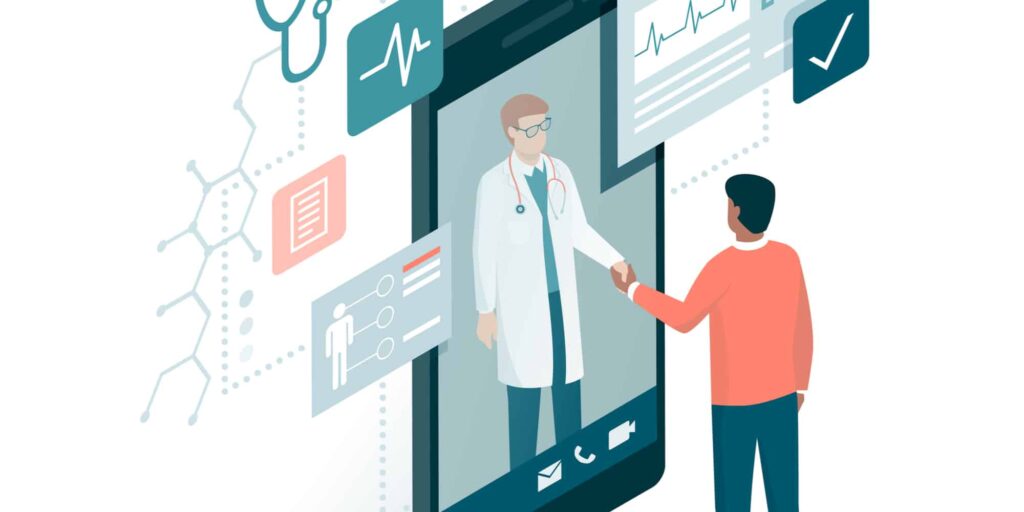In our previous post we discussed the importance of human-centered design. In this post we’d like to share some real-world examples of human centered design concepts in health-app development.
The International Organization of Standards says human centered design concepts “improves human well-being, user satisfaction, accessibility, and sustainability.” To do this, creators should go through three steps:
- Empathize with end users
- Identify ideas and prototypes
- Implement and test ideas, incorporating user feedback
What makes the following digital solutions stand out? They’ve been created using participatory design, where every decision is made with the user (or users) in mind. The developers behind these products created apps that are solving problems for healthcare providers and patients, as well as the office staff and family members also involved in care. Let’s have a look.

Alleviate Isolation
Researchers at the University of California San Francisco worked with design firm IDEO to develop a tool called PRIME, or Personalized Real-time Intervention for Motivational Enhancement. The app addresses symptoms like anxiety that can keep patients with schizophrenia and depression isolated and avoiding treatment. It offers motivational coaching from trained professionals and social connections with peers, in a closed community. The team used human-centered metrics, working with patients to watch how they interacted with the app and if goals were met.
Prevent Information Overload
Canadian tech entrepreneur Mashid Yassaei and her company Everest designed an information-retrieval chatbot called Tali, just in time for the overload of information and misinformation that came with COVID. Using Natural Language Processing, Tali can answer questions from doctors or patients. Yassaei explains, “We are seeing a shift from doctors and hospitals being the centre of the healthcare system to a mindset where patients are the centre and they’re empowered to take responsibility and accountability for care.”
Connect Patients and Doctors
Medici was started by a father intent on helping others access quality primary care. He experienced frustration when his daughter needed a pediatric neurologist, so he created a user-centric digital solution. Medici allows patients to connect with healthcare providers at any time, from any browser. It doesn’t require users to download an app, and it also allows doctors to collaborate, while ensuring patient privacy.

Protect Health Information
As medical devices become more prevalent, so too will the risk of cyber-attacks. MedCrypt found this space in the market and designed products to proactively monitor for vulnerability, encrypt data, and detection of attacks. MedCrypt came to these solutions as a team of medical device experts, with patient security concerns in mind.
Participatory Design
In order to outperform the competition, companies must embrace a thorough design practice. This means taking a step-by-step approach that includes:
- Passion for research
- Personalization and Customization
- Innovation using the latest technology
- Understanding why simplicity works
Partnering with MindSea can streamline the design process.
Among resources available at MindSea are an App Design Checklist and a Guide to User Experience Design.



